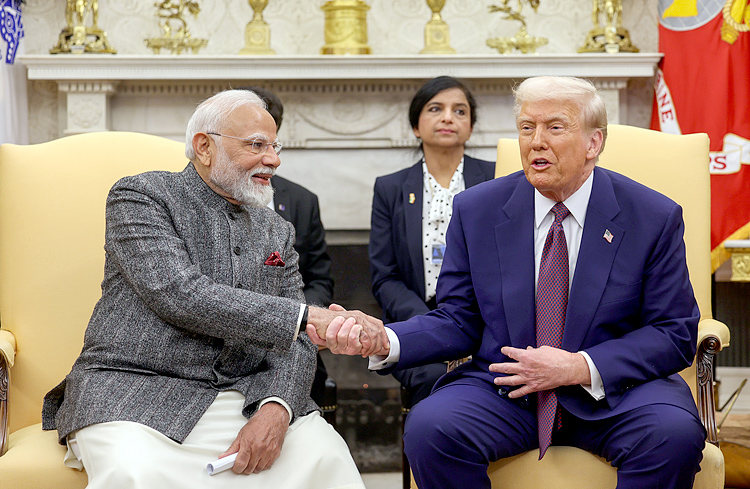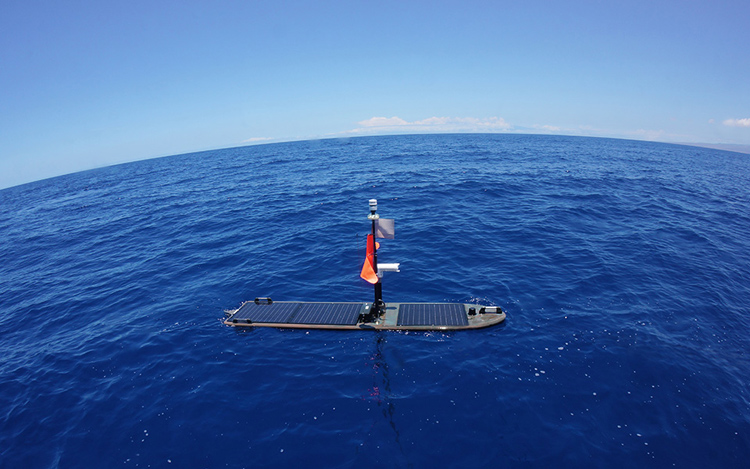INDIAN ARMED FORCES CHIEFS ON OUR RELENTLESS AND FOCUSED PUBLISHING EFFORTS

The insightful articles, inspiring narrations and analytical perspectives presented by the Editorial Team, establish an alluring connect with the reader. My compliments and best wishes to SP Guide Publications.

"Over the past 60 years, the growth of SP Guide Publications has mirrored the rising stature of Indian Navy. Its well-researched and informative magazines on Defence and Aerospace sector have served to shape an educated opinion of our military personnel, policy makers and the public alike. I wish SP's Publication team continued success, fair winds and following seas in all future endeavour!"

Since, its inception in 1964, SP Guide Publications has consistently demonstrated commitment to high-quality journalism in the aerospace and defence sectors, earning a well-deserved reputation as Asia's largest media house in this domain. I wish SP Guide Publications continued success in its pursuit of excellence.
- Operation Sindoor: Resolute yet Restrained
- Advanced MRSAM for India for a greater firepower
- Japan and India set forth a defence cooperation consultancy framework, talks on tank and jet engines
- Uri, Pulwama and now Pahalgam
- Terrorist Attack in Pahalgam in Kashmir: Unfolding a long surgical war against PAK
Indo-US Autonomous Systems Industry Alliance (ASIA)
This Indo-US defence partnership marks a notable shift in US-India relations, reflecting a commitment to deeper strategic ties and collaborative defence manufacturing
 |
The Author is Former Director General of Information Systems and A Special Forces Veteran, Indian Army |

In January 2025, India and the US unveiled plans for co-producing US-designed sonobuoys. These sonobuoys are critical for anti-submarine warfare, enabling real-time acoustic monitoring of underwater activities. This partnership involves America's 'Ultra Maritime' and from India, its state-owned Bharat Dynamics Limited (BDL), marking a significant step in high-end technology collaboration focused on tracking submarines.
The sonobuoys produced under this initiative will be interoperable between the Indian Navy, the US Navy, and allied forces, enhancing collaborative defence efforts
Underwater domain awareness is crucial for monitoring submarine activities, especially given the increasing naval presence, particularly from China, in the Indian Ocean Region (IOR). The sonobuoys produced under this initiative will be interoperable between the Indian Navy, the US Navy, and allied forces, enhancing collaborative defence efforts. This capability is expected to become operational by 2027, contributing to regional security dynamics amidst rising global tensions.
Subsequently on February 14, 2025, India and the US announced formation of the Autonomous Systems Industry Alliance (ASIA) initiative aimed at scaling industry partnerships for the production of autonomous systems; through partnerships between companies like Anduril Industries and Mahindra Group, as well as L3 Harris and Bharat Electronics. This initiative is expected to enhance both nations' capabilities in maritime security, particularly in the Indo-Pacific region, which is increasingly influenced by China's assertiveness. Focus areas of ASIA include the following:
India and the US announced formation of the Autonomous Systems Industry Alliance (ASIA) initiative aimed at scaling industry partnerships for the production of autonomous systems
- Maritime Drones - production of maritime drone technology.
- Counter-Unmanned Aerial Systems (CUAS) - development of AI-enabled systems designed to counter unmanned aerial vehicles (UAVs).
- Advanced Maritime Systems - aimed at enhancing regional security through advanced autonomous technologies.
- Active Towed Array Systems - L3 Harris and Bharat Electronics are collaborating on the co-development of active towed array systems.

A prominent feature of the ASIA partnership is the production of the Wave Glider unmanned surface vehicle (USV), developed by Boeing's subsidiary, Liquid Robotics. This vehicle is designed for long-term ocean deployment, capable of gathering critical data on submarine movements, weather conditions, and maritime activity without needing refuelling for over a year. The collaboration aims to produce 60 Wave Gliders in India with Sagar Defence Engineering, a local partner known for its expertise in unmanned systems.
A prominent feature of the ASIA partnership is the production of the Wave Glider unmanned surface vehicle (USV) designed for long-term ocean deployment without needing refuelling for over a year
The initiative also includes the development of several surveillance technologies. For instance, the Sea Picket system will monitor ship movements and underwater activities continuously for up to six years. Additionally, state-owned Bharat Electronics Limited (BEL) and Bharat Dynamics Limited (BDL) are expected to collaborate with US firms to produce sonar and sonobuoy systems that enhance naval operational capabilities. Other systems under consideration include Triton autonomous vehicles that can operate both on the surface and underwater, as well as Large Diameter Autonomous Undersea Vehicles. These technologies are crucial for improving underwater domain awareness and enhancing India's naval strike capabilities.
The initiative also includes the development of several surveillance technologies. For instance, the Sea Picket system will monitor ship movements and underwater activities continuously for up to six years
Indo-US collaboration focusing on underwater domain awareness (UDA) technologies is part of a broader strategy to strengthen maritime security in the Indian Ocean Region and improve capabilities against potential underwater threats. Identifying relevant technologies for co-production can include underwater surveillance systems, unmanned underwater vehicles (UUVs), advanced sonar systems, and data analytics tools for monitoring maritime activities. Key components of this collaboration include collaborative research and development (R&D) initiatives that can lead to the co-creation of innovative solutions tailored to the specific needs of both countries, including advancements in sensor technologies and communication systems. The partnership could also focus on training and capacity-building programmes for personnel involved in UDA operations, ensuring that both nations benefit from shared knowledge and best practices. Establishing clear policies and regulations for the exchange of technologies and data can help facilitate more seamless cooperation in this strategic area.
The establishment of the above initiatives reflects a deep strategic alignment between India and the US as both nations recognise the need for enhanced maritime security capabilities in response to evolving threats. The sonobuoy co-production and the ASIA initiative are viewed as pivotal steps in fostering long-term defence collaboration that extends beyond traditional military exercises; these advancements not only bolster defence capabilities but also signify a commitment to shared security interests in a region marked by increasing geopolitical complexity. This Indo-US defence partnership marks a notable shift in US-India relations, reflecting a commitment to deeper strategic ties and collaborative defence manufacturing. It aligns with India's goal of achieving greater self-reliance in defence production through initiatives like "Atmanirbhar Bharat" (Self-Reliant India) while also providing the US with a reliable ally in a strategically vital region. Hopefully, the US will remain loyal to India in the coming years, because it has a long history of ditching friends in the past.





